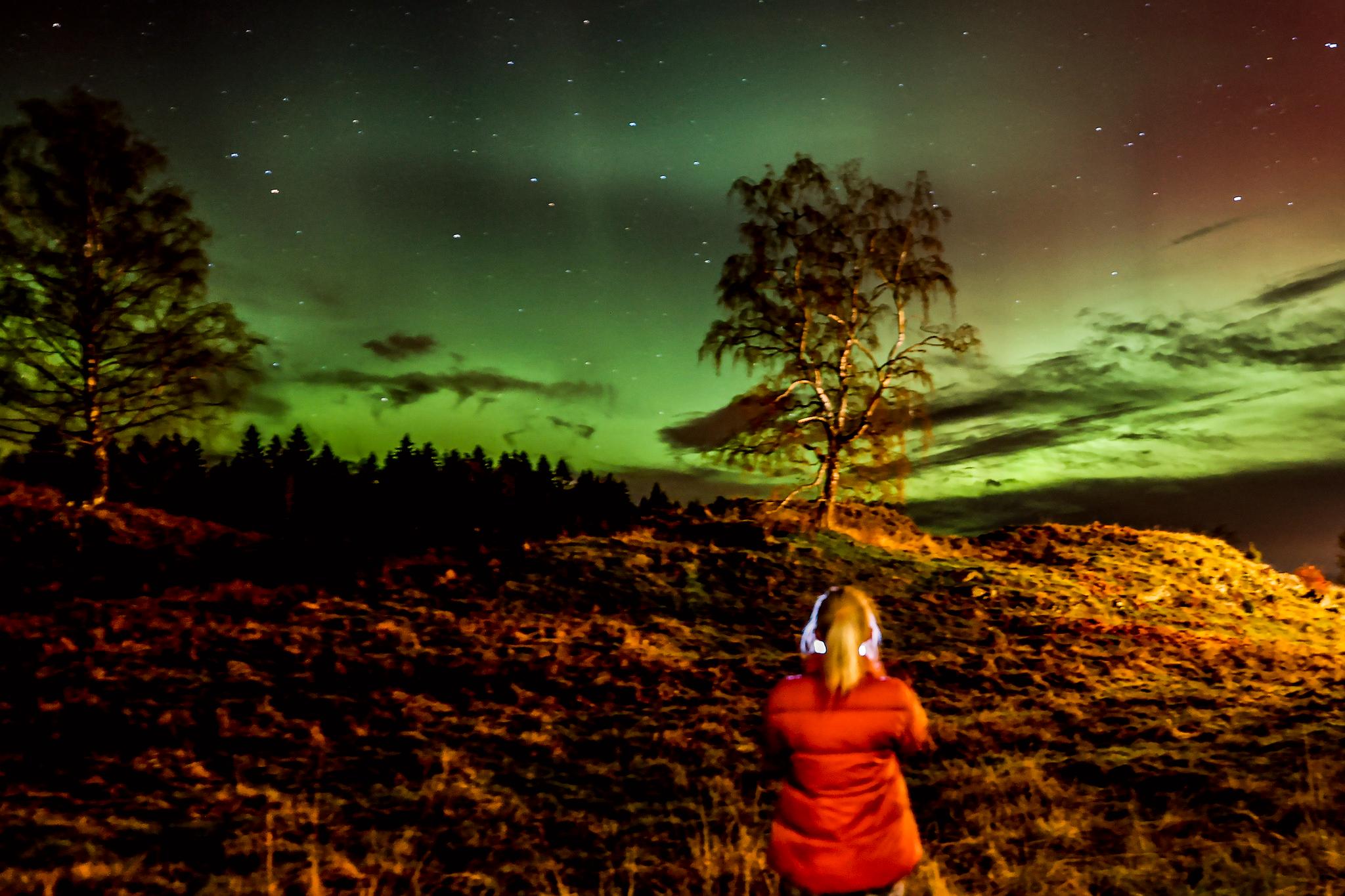-
Anik van der Boone
Center for Earth Development and Dynamics (CEED), University of Oslo

Let me tell you about a shield that is invisible from the earth.
Chronicle
This is a chronicle. Comments in writing are at the expense of the author.
Although you may never notice that it is here, the Earth’s magnetic field plays an important role in our daily lives. It contains charged particles and protects us from solar storms that can be harmful to satellites, and our phones use computer models of the magnetic field for navigation.
The magnetic field also protects our atmosphere. In fact, we believe that the atmosphere of Mars was blown away by the solar wind after the magnetic field was turned off about 3.7 billion years ago. The interaction between the Earth’s magnetic field and the solar storm creates a beautiful phenomenon known to many Norwegians: the Northern Lights.
Although the Earth’s magnetic field plays an important role in our lives, we do not know much about why the magnetic field works. To understand this, we need to study how the Earth’s magnetic field worked in the past, billions of years.
Earth’s magnetic field is formed inside our planet by an outer core that flows like liquid, hot iron water. It is this movement of iron that creates our magnetic field, called the “geodynamo”.
As early as the nineteenth century, the Norwegian scientist Christopher Hanstein discovered that something deep inside our planet was responsible for moving his compass needle. He said poetically: “The earth speaks of the motions within it with the dumb language of the magnetic needle.
Imagine the Earth’s magnetic field like this A bar magnet Inside the Earth, approximately corresponding to the Earth’s axis of rotation. The bar magnet has two poles: the north pole and the south pole. This “dipole” is responsible for 95% of the Earth’s magnetic field. The remaining 5 percent are more complex magnetic structures.
The magnetic field varies in time scales from seconds to hundreds of millions of years. This causes the position of the magnetic poles to change. Sometimes the north and south poles change completely. When they turn, our compass will no longer be to the north, but to the south.
Throughout human history, the Earth’s magnetic field has been strong, but we are now beginning to realize that this has not always been the case.
Today we use satellites to continuously measure the magnetic field. But how can we learn something that we could not see or even touch millions of years ago?
Rocks can “capture” it when it forms a magnetic field. The magnetic field inside the rock turns itself in the direction of the magnetic field, and these “magnetizations” are locked in the rock. In this way, rocks can “remember” the Earth’s magnetic field as they formed.
This is how scientists can study rocks that are millions of years old for the characteristic of the Earth’s magnetic field at that time. This is called “paleomagnetism”.
Scientists have been collecting paleomagnetic data for over 60 years. The perception of the long-term nature of the Earth’s magnetic field increased sharply.
Aside from a huge gap that has plagued scientists for decades, we now have a better understanding of how the magnetic field has worked over the last 500 million years: Devon, 420-360 million years ago.
The rocks from Devon have no memory of the magnetic field at that time. Instead they become “remembering” a magnetic field from a young age.
There have been more adverse effects than large-scale extinctions throughout Earth’s history. A time interval with a single Polarity Called a “crown.” The “super crowns” have long had a single polarity. The Earth’s magnetic poles last rotated 780,000 years ago.
New research from many Devonian paleomagnetic data now shows that the magnetic field at that time was very weak and variable, which prevented rocks from magnetizing properly. The magnetic field in the Devonian rocks turns in the direction of the Kiaman opposite “Super Crown” because the field was so strong.
We now believe that the Earth’s magnetic field in Devon may have been too weak and that plants and animals may have been subjected to increased UV radiation because it did not adequately protect life on Earth. Fortunately, Devonian fish do not need satellites to navigate …
Looking back over time, our research shows that the Earth’s magnetic field has worked very differently from what it is today. This knowledge will help us to understand when and how the Earth’s inner and outer nuclei were formed, which will help improve computer models of the Earth’s magnetic field.
(Norwegian-Language) Thanks to Peter Silkoset, Matt Domier and Nina Buenaventura for the edits.
References:
Hanstein, Christopher. Study of the Earth’s magnetism. Volume 1. Lehmann & Grondall, 1819.
A. Van der Boone, A.J. Biggin, d. Talner, M.W. Hounslow, r. Bono, K .; Wojciech, M .; Paskovsky, p. Koenigschoff, T .; D. Backer, p. Kabanov, R .; Vandenberg, A Persistent Nonuniformitarian Paleo Magnetic Field in Devonian? EarthArXiv Preprint (2021), doi: 10.31223 / X53W56. Earth Science is under review for review.
A. Van der Boone, Ten Things You Didn’t Know About Earth’s Magnetic Field, 2021.

Prone to fits of apathy. Unable to type with boxing gloves on. Internet advocate. Avid travel enthusiast. Entrepreneur. Music expert.




